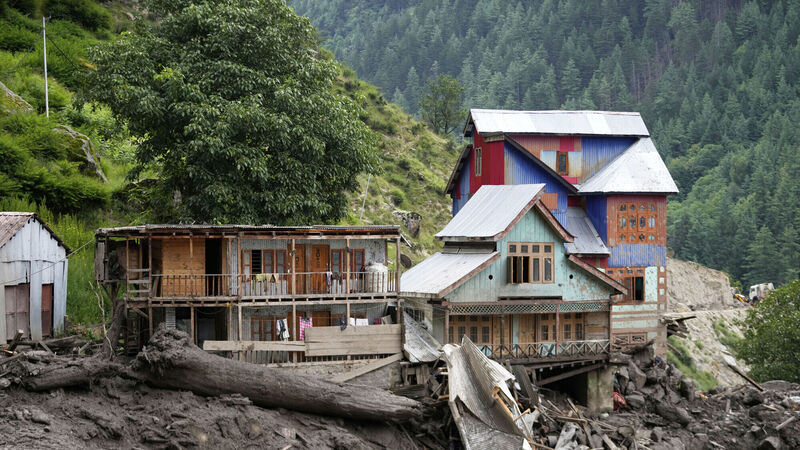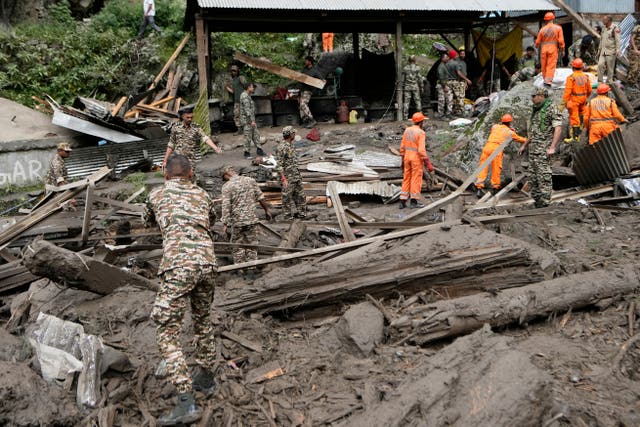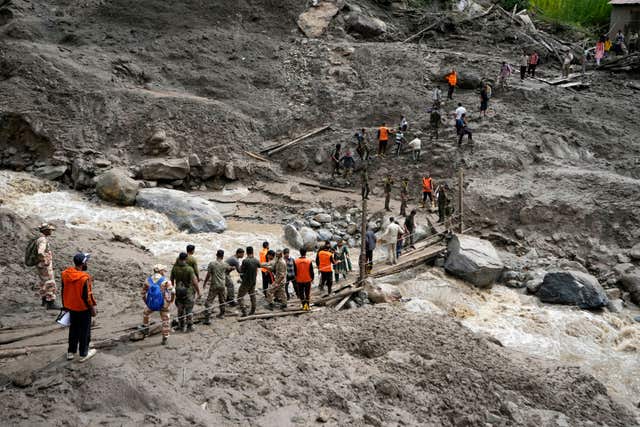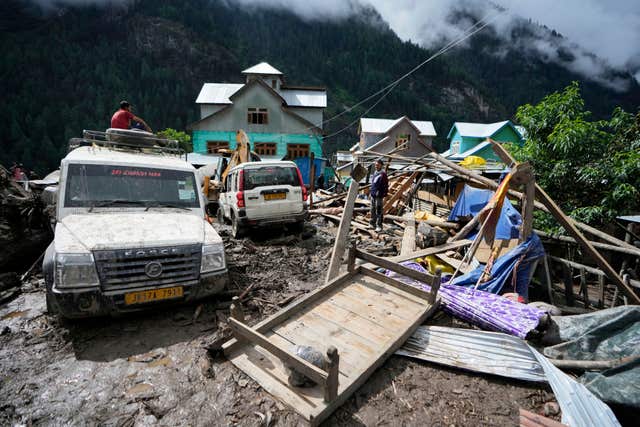Flash floods triggered by torrential rains kill 176 in India and Pakistan

Flash floods triggered by torrential rains have killed at least 176 people and left scores of others missing in India and Pakistan over the past 24 hours, officials said, as rescuers brought to safety some 1,600 people from two mountainous districts in the neighbouring countries.
Sudden, intense downpours over small areas known as cloudbursts are increasingly common in India’s Himalayan regions and Pakistan’s northern areas, which are prone to flash floods and landslides.
Cloudbursts have the potential to wreak havoc by causing intense flooding and landslides, impacting thousands of people in the mountainous regions.

Experts say cloudbursts have increased in recent years partly because of climate change, while damage from the storms has also increased because of unplanned development in mountain regions.
In India-controlled Kashmir, rescuers searched for missing people in the remote Himalayan village of Chositi on Friday after flash floods a day earlier left at least 60 people dead and at least 80 missing, officials said.
Officials halted rescue operations overnight but rescued at least 300 people on Thursday after a powerful cloudburst triggered floods and landslides.
They said many missing people were believed to have been washed away.
At least 50 seriously injured people were treated in local hospitals, many of them rescued from a stream filled with mud and debris.
Disaster management official Mohammed Irshad said the number of missing people could increase.
Weather officials forecast more heavy rains and floods in the area.
Chositi, in Kashmir’s Kishtwar district, is the last village accessible to motor vehicles on the route of an ongoing annual Hindu pilgrimage to a mountainous shrine at an altitude of 3,000 metres (9,500ft).

Officials said the pilgrimage, which began on July 25 and was scheduled to end on September 5, was suspended.
The devastating floods swept away the main community kitchen set up for the pilgrims, as well as dozens of vehicles and motorbikes.
More than 200 pilgrims were in the kitchen at the time of the flood, which also damaged or washed away many of the homes clustered together in the foothills, officials said.
Photos and videos on social media show extensive damage with household goods strewn next to damaged vehicles and homes in the village.
Authorities made makeshift bridges on Friday to help stranded pilgrims cross a muddy water channel.
Kishtwar district is home to multiple hydroelectric power projects, which experts have long warned pose a threat to the region’s fragile ecosystem.
In northern and north-western Pakistan, flash floods killed at least 116 people while rescuers evacuated 1,300 stranded tourists from a mountainous district hit by landslides.
At least 35 people were reported missing in these areas, according to local officials.

Flash floods triggered by heavy rains and cloudbursts early on Friday killed at least 56 people in Buner district in Pakistan’s north-western district of Khyber Pakhtunkhwa province, a government administrator said.
Dozens were injured as the deluge destroyed homes in villages in Buner.
Rescuers backed by boats and helicopters worked to reach stranded residents.
More than 415 people, mostly women and children, have died in rain-related incidents across the country since June 26.
Deaths were reported from different parts of Pakistan on Thursday.
Bilal Faizi, a provincial emergency service spokesman in Khyber Pakhtunkhwa, said rescuers worked for hours to save 1,300 tourists after they were trapped by flash flooding and landslides in the Siran Valley in Mansehra district on Thursday.
The Gilgit-Baltistan region in Pakistan has been hit by multiple floods since July, triggering landslides along the Karakoram Highway, a key trade and travel route linking Pakistan and China that is used by tourists to travel to the scenic north.
The region is home to scenic glaciers that provide 75% of Pakistan’s stored water supply.
Pakistan’s disaster management agency has issued fresh alerts for glacial lake outburst flooding in the north, warning travellers to avoid affected areas.
A study released this week by World Weather Attribution, a network of international scientists, found rainfall in Pakistan from June 24 to July 23 was 10% to 15% heavier because of global warming.
In 2022, the country’s worst monsoon season on record killed more than 1,700 people and caused an estimated 40 billion dollars in damage.









